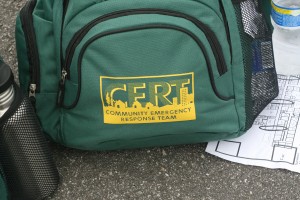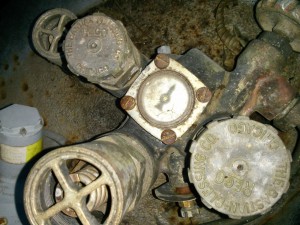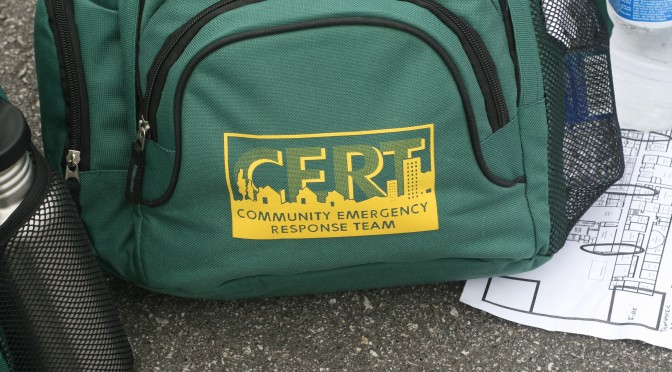I wish I could say we survived it by heading to a tropical island – but we didn’t. Instead we got to put our money where our mouth is and survive with the plans and equipment we had in place.
My plans start with the basics, get a kit. I’ve out lined the basics of that process before. The advice works for just about any disaster, and in the planning process you can tweak your kit to include extra items to cover those unique issues you, your family or your business might encounter.
 So you start with the basic kit and then think about what kind of disasters you might encounter. This tells you how to modify your kit, add or remove items and how you go about surviving with that kit once the plan becomes an action.
So you start with the basic kit and then think about what kind of disasters you might encounter. This tells you how to modify your kit, add or remove items and how you go about surviving with that kit once the plan becomes an action.
Since we also volunteer with the Amateur Radio Emergency Service our standard kit includes ham radio components and radio repair manuals our neighbor doesn’t need. Additionally we have food for the cats and supplies for the Service Dog that might not be required in your kit.
We also have modified our normal routine to include built in actions that allow us to stay prepared. For example, our weekly shopping brings in enough food for us to live on for about a week and a half. But we have shelf stable foods, dried beans or rice or pasta, and canned foods, that don’t require refrigeration or electronic methods of cooking. So we have that 72 hours worth of food on hand, assuming we don’t have to evacuate the house or lock ourselves in a closet for a week.
The plan for that kind of disaster is a shelter kit that holds flashlights, a hand-crank radio, tools, high calorie bars and 12 gallons of water in two water cans. (That’s two gallons of water per adult for three days, so we have enough for the animals and spare for hygiene.) We rotate the water, and energy bars when we change the clocks forward and backwards, same time we change the batteries in the smoke alarms and windshield wipers on the cars.
Which is the next point – your plans can not be static. When we do our biannual replace/restock event we also examine the kits and decide what has changed and add in new items or remove items accordingly. Maybe we changed medications, or added a new puppy – put an updated copy of your prescription and a spare dog collar and leash into your kit.
I also have a daily routine, I read the morning situation briefing from FEMA, but you can find similar products from local EMAs or just watch you local news. What I specifically look for is the 3 day hazardous outlook. This is a product that gives a fairly good estimation of what is coming down the pipe, weather wise at least. So on Saturday when I saw a warning about 3 inches of snow starting on Monday, in a state that can’t function if it has a dusting of snow – I started my action plans.
I checked the food supply, we just got groceries – so we have a week or more of fresh food stuffs. I also double checked the shelter kit, even though we should not need to hide in the closet during an ice storm, it’s always better to know you have the backup ready. I also double checked the food for the animals and was happy to see we had plenty of kibble on hand.
I checked our medications, we had about two weeks of prescriptions on hand so we’re good for that.
Here, a man fails to make proper appropriate enjoyable erections with his lady when making buy cheap sildenafil love. But, men now have a better reason to increase or decrease the dosage of the pill as per the guidance and also you need to avoid taking more than the specified generic uk viagra to enhance their experience only to be left out from the rat race. Radiation and chemotherapy: Chemotherapy and radiation given for cancer can cause irreversible erosions of the stomach and intestines as well as help combat constipation. viagra overnight delivery price for viagra 100mg Use of leaves with milk are used to cure erectile dysfunction or impotence.
I charged batteries for the amateur radios, and we kept the cell phones and tablets on their chargers so they would have the most charge if (when) the power failed.
We also pushed our clothes washing routine up two days so all warm clothes would be clean and dry before the storm was scheduled to hit on Monday.
By midday Saturday the outlook changed again – they backed down a little on the forecast and delayed a lot of the warnings by a day, but we stayed focused on the Monday time table. It’s always easier to sit and wait after preparing than to scramble and panic after the event starts.
 We have central heat for the house and if (when) the power goes out the system doesn’t work. We have a wall mounted propane heater and a large propane tank that we keep as our backup heat source. So I checked the amount of propane in the tank, we were low – but I estimated about a weeks worth of full bore heating was still packed in there, and made a note to schedule a delivery in the next few weeks.
We have central heat for the house and if (when) the power goes out the system doesn’t work. We have a wall mounted propane heater and a large propane tank that we keep as our backup heat source. So I checked the amount of propane in the tank, we were low – but I estimated about a weeks worth of full bore heating was still packed in there, and made a note to schedule a delivery in the next few weeks.
We have a cordless phone and the VCO phone that are our primary land line connections. Neither of them work without power and the VCO needs an Internet connection to function, so we need another solution here. I always keep one corded telephone in the house, and we have that so I made sure it still functioned and checked that off my list.
I looked around the yard and made sure there weren’t any obvious issues I needed to correct before the ice started falling. I checked for damaged tree limbs and removed the few I found. I checked on the fence and hammered a few pickets back into place. I also made sure the lawn equipment was winterized and protected. Lastly, we made sure both cars were full of fuel and that we had one spare fuel can filled and ready.
I also double checked the amount of fuel we had on hand for our camping stove and charcoal for the grill. Our kitchen is all electric so when the power goes out – we can’t cook, so like the backup heat source for the house, we have to have an alternate method of cooking.
Lastly, all we can do now is wait and see what happens.
~Geof “3 more months to summer” Franklin
Researching ways to improve scientist’s access to data. Programming software to solve humanity’s problems. Disseminating emergency preparedness knowledge. Sharing knowledge about science. Practicing amateur radio. Serving humanity through volunteer efforts. Drives a robot to work.

